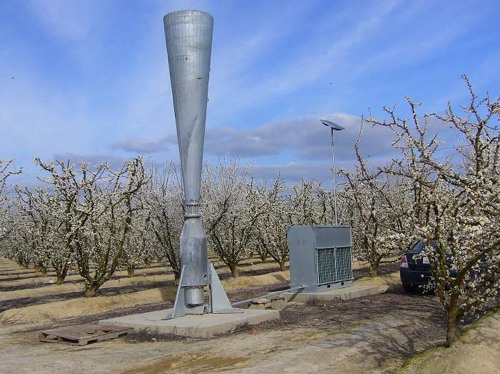
While hanging out with a few academic friends on Friday I began discussing a recent research paper with someone I didn't know particularly well. It turned out that this guy was the odd man out of the group and instead of being a professor / post doc / grad student he worked in finance, and was not terribly supportive of a lot of empirical work. Trotting out the classic "correlation doesn't imply causation" critique he then said something along the lines of "you could show that rain makes the stock market go up and down and it wouldn't mean anything." This of course reminded me of one of my favorite counterintuitive-but-compelling research literatures: the effects of weather on stock market returns.
Now, first off, it has to be said that one of the nice things about working with climate data and effects is that causality is, in fact, generally pretty easy to establish. While humans appear to be
quite good at
affecting climate at
decadal time scales, we generally are unable to affect day-to-day or even month-to-month weather patterns, and have great difficulty predicting timing and spatial patterns of highly-relevant weather behavior such as heat waves and storms even over a time span of hours or days. While this is bad from a welfare point of view (e.g., we'd love to be able to predict where a hurricane will make landfall a month ahead of time) it means that statistical analyses of the impact of weather itself on a given phenomenon, provided you're careful about your research design, are generally pretty causally attributable.
(see important caveat below)*
Given that, it turns out that there's some pretty strong evidence that weather affects stock market returns. There are
multiple papers pointing out that
stock market returns are affected by
local weather (the latter of those containing this depressing gem of wisdom: "behavioral finance shows that lower temperature can lead to aggression, while higher temperature can lead to both apathy and aggression"). My favorite and, as far as I can tell from this literature, the definitive word on the subject so far, is
this paper by Hirschleifer and Shumway showing that: yes, stock market returns are affected by the weather; the effect is driven by sunlight or the lack thereof and not precipitation per se; but the effects are so small that the only way to arbitrage across it is if you have absurdly low transaction costs (echoing one of my favorite applied finance papers of all time, Schleiffer's
The Limits of Arbitrage).
If the sunlight result makes you think of SAD, or
seasonal affective disorder, you're onto something interesting: Kamstra, Kramer and Levi find strong evidence (getting some nice identification off of solar insolation across hemispheres) that
stock markets experience something like it, too. A
follow up paper argues that one could capture the same result based just on hemisphere-appropriate seasonality and that an explicitly psychological 'SAD' effect is probably not supportable at present, though that finding was in turn
disputed by Kamstra et al. Regardless, I'd argue that (a) seasonality driving markets is a fairly interesting idea, as is any result that links natural processes (which, after all, the seasons fundamentally are) and human behavior and (b) this only further impresses the necessity of the
important caveat below.
All of which is to say that sometimes what seems at first glance to be a semi-ludicrous postulate can turn out to be quite true. Evidence has been found that stock markets are affected by everything from
sports results to
lunar phases, and in many cases these relationships seem both intuitive and robust. The question of what those results
mean, however, can sometimes be difficult to tease out (have I mentioned the
important caveat*?), so a policy proscription or a deeper insight into human nature might not actually be forthcoming. Put in other words, perhaps my finance friend was right: you can show that stock markets are affected by sunny days, but really, what does that mean?
* Important caveat: The fact that weather is exogenous doesn't mean that saying something about mechanisms / pathways / etc. is easy. Weather affects everything from crop production to labor supply to ecology and phenology to the stock market behaviors seen above, so if you're going to make a claim about weather affecting something *through* some pathway, or even more dangerously plan on using it as an instrument, you should be very, very careful. Economists call your justification for claiming causality in such cases your "exclusion restriction," and if there's one concept I'd like to see enter into the general population memosphere, it's that.


.jpg)
+1.jpg)







